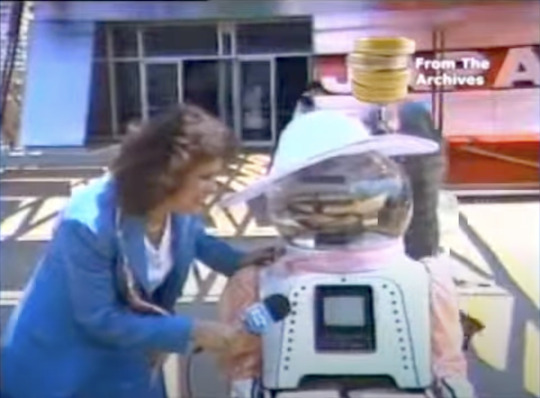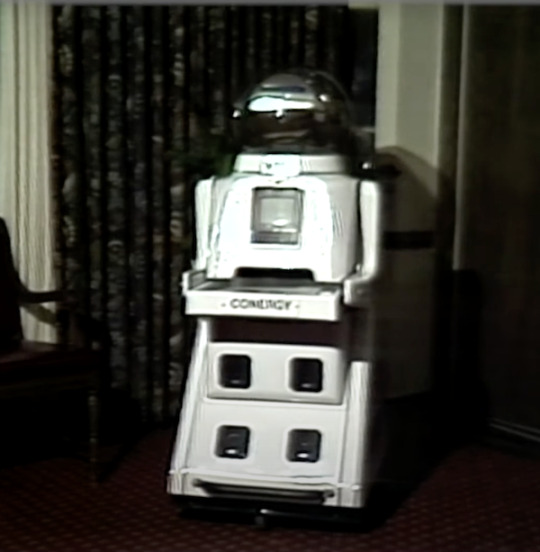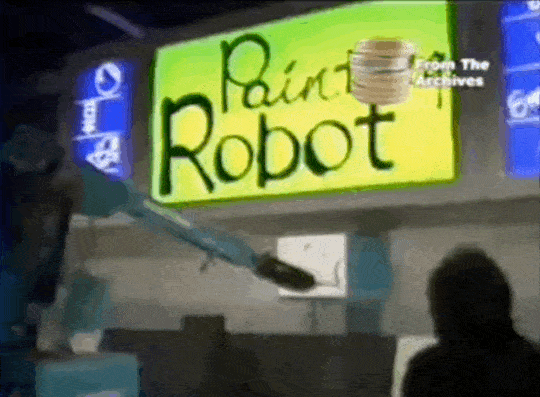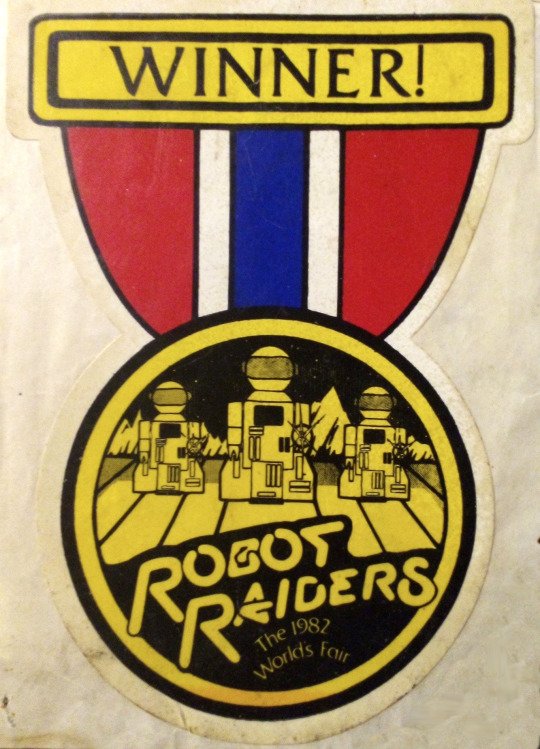#Knoxville International Energy Exposition
Explore tagged Tumblr posts
Text



youtube
"Connie" Conergy (an Android Amusements DC-2), The Conergy Energy Saving House, 1982 World’s Fair, Knoxville, TN. "Hi I'm Connie, I'm your robot from Conergy and I'm here to invite you to join us at the energy saving house at the 1982 World's Fair. We'll be there to tell you about all sorts of ways that you can save energy on residential housing. From household conservation, cooling, ventilation, heating, plumbing, and insulation. And we have all sorts of interesting characters that I'm looking forward to introducing to you when you come visit us at the fair. So please come join us. We'll be at the 1982 world's fair located across the street from the Japanese pavilion and next to the candy factory. Come see us." – Join CONNY and her friends at the Conergy Energy Saving House.
#cybernetics#robot#showbot#1982#World's Fair Knoxville#Knoxville International Energy Exposition#Youtube
41 notes
·
View notes
Text


60 Minute Developing Robot (another Android Amusements DC-2), 1982 World’s Fair, Knoxville, TN. "Visitors check out the 60 Minute Developing Robot during the World's Fair in 1982." – Remembering the 1982 World's Fair in pictures, Photo: Gary Heatherly, McClung Museum.
48 notes
·
View notes
Text







Japan Pavilion Painting Robot, 1982 World’s Fair, Knoxville, TN. In the waiting area of the Japan Pavilion, the "Painting Robot" skilfully draws patterns chosen by guests. "Japan, no longer a tiny nation struggling to recover from defeat, had created the world’s second-biggest economy, and had just surpassed the United States to become the world’s biggest automaker, becoming a serious rival on the global market for several U.S. products. Highlighting their technological wizardry, Japan created a pavilion offering both a virtual and heart-stoppingly realistic bullet-train ride and a painting robot with a flair for semi-abstract art. It was just a symbol of what Japan had learned to do with robots in factories." – 1982 Worlds Fair in Hindsight, Knoxville History Project.
#cybernetics#robot#robot arm#industrial robot#1982#World's Fair Knoxville#Knoxville International Energy Exposition
30 notes
·
View notes
Text





youtube
Expo Ernie by ShowAmerica, for the Canada Pavilion, 1982 World’s Fair, Knoxville, and event mascot for Expo 86, Vancouver, Canada. "Expo Ernie is one of the more unique robots developed by ShowAmerica. Created for the Canadian government and premiered at the recent World's Fair in Knoxville, Tennessee. Ernie is slated to be the mascot of the World's Fair of 1986 in Vancouver, B.C. The robot is presently on a national tour across Canada to build awareness for the fair." – The Personal Robot Book, by Texe Marrs (1985).
"For those who visited Expo 86, if they were lucky, they may have seen the event’s mascot, Expo Ernie. Rather than someone in a giant foam suit, Ernie was a remote-controlled robot that could interact with visitors. The idea for Ernie came about when Expo 86 Commissioner General Patrick Reid saw a robot at an American airport and thought it would be a great mascot. Responsibility for its design and construction fell on Ken Larson, who built Ernie, operated him, and provided the voice. Larson described himself as a freelance actor from Florida and he refused to have his picture taken because he felt Ernie should remain a robot in the minds of the public. Larson left the post of handling Ernie in 1985 when he moved back to Florida to work on acting and film production work. With Larson gone, Craig Wheeler, a 22-year-old acting student took over operation from Ernie. Leading up to the big event Ernie was a world traveler. [In] 82 He spent six months at the Canada Pavilion during the Knoxville World’s Fair." – Expo 86, Canadian History Ehx, by Craig Baird.
#cybernetics#robot#showbot#1982#world's fair knoxville#Knoxville International Energy Exposition#Expo 86#ShowAmerica#Youtube
38 notes
·
View notes
Text



Betty and Taro, from the 1982 World’s Fair, Knoxville, TN. "On entering the [Japan] Pavilion you are greeted by Betty and Taro respectively, the American and Japanese robots who must be related to that cute little robot R2-D2 from the Star Wars movies because the resemblance is remarkable." – From the Archives: Knoxville Worlds Fair Robots, WDEF News 12.
"THE JAPANESE ENERGY SITUATION The Japanese energy situation is introduced in an amusing manner through a dialog between the Japanese robot, "Taro," and the American robot, "Betty." Data on the Japanese and American situations are compared by use of a combination of graphic panels and an electric indication board which change according to the theme." – JAPAN PAVILION, The 1982 World's Fair, The Knoxville International Energy Exposition.
22 notes
·
View notes
Text




youtube
youtube
"The Robot Family" at the Tennessee Exhibit in the Technology and Lifestyles Center, 1982 World’s Fair, Knoxville, TN. The "Robot Family" stars Otto C., Connie, Jordette & Jordy, and puppy Chow. "I want to introduce you to father robot, come on out here Otto. Come on over here and turn around – "Yes ma'am" – Face the camera – "whoa!" Otto is sponsored by odyssey of Magnavox and here inside his drawer that says Otto C. he has an odyssey video game, go ahead Otto – "That tickles, would you do that again please?" – Sure. And now for mama robot Connie; Connie come on over – "Hello Charlotte" – Hi Connie, you look so cute – "Thank you so much" – I love your little pink dress – "We're enjoying our stay at the fair." – Turn around and show them your baby. This is baby Dawn. Baby Dawn's too little to talk but she can move around a little bit. Connie is sponsored by conergy which also has the energy savings house here at the world's fair. And now the kids, Jordette the teenager and Jordy the little boy. Hi guys, come on right back here. This is Jordette and this is Jordy, both sponsored by Jordache. And what family doesn't have the family dog; this is little puppy chow sponsored by Purina." – Robot Family, 1982 World's Fair, Knoxville Tennessee.
24 notes
·
View notes
Text

youtube
"H.J. II" promotional robot by ShowAmerica Inc. for H.J. Heinz Co. (1982). Heinz was the "official ketchup" of the 1982 World’s Fair, held in Knoxville, Tennessee, known officially as the Knoxville International Energy Exposition. "A human-sized H.J. Heinz Co. robot shaped like a ketchup bottle added a little flavor to the experience of attending the 1982 World’s Fair. … The robot — which was appropriately 5 feet, 7 inches tall in tribute to the “57 varieties” company slogan — often got noticed by people entering the fairgrounds. Featuring mechanical arms but otherwise shaped like a giant ketchup bottle, it served as sort of an inanimate fair ambassador. ... Another Heinz ketchup robot named “H.J.,” which was based out of the Chicago area was to make a promotional appearance at a Cleveland, Ohio, department store, but its crate could not be found upon arrival via air travel. As a result, the Knoxville robot [is] apparently named H.J. II." – As World's Fair robots went, this one had to play ketchup, by John Shearer, Knox news.
#cybernetics#robot#showbot#World's Fair Knoxville#1982#Knoxville International Energy Exposition#Youtube#ShowAmerica#Heinz
26 notes
·
View notes
Text



Robot Raiders, Video Expo Arcade, 1982 World’s Fair, Knoxville, TN. "Eight waist-high robots dashing around a ring zapping each other with light beams to the beat of rock music at the 1982 World's Fair have added a new dimension to electronic games. But the game, which costs $1.50 to play for about two minutes, may be just the "horse and buggy" of robot wars of tomorrow, its developers say. The game, called Robot Raiders, is played much like a video arcade game, except the action involves real robots, operated by remote control, in an octagonal ring. The eight humans at the controls fight their mini-war to the beat of hard rock music. As the lights flash and the music pounds, the robots race around firing light beams from their outstretched arms. The object is to hit an opponent in a a panel that registers the shot and transmits it by radio frequency to a scoreboard. "The guy says 'Go.' and everybody kind of comes up with lasers blazing," said Joe Stewardson, a photographer who says he played the game several times at the fair in Knoxville, Tenn. The robots, which are about about 3 feet tall, are "kind of your traditional robot," he said. The control stick moves left, right, forward and backward "just like a fighter pilot's," he said. While the game is getting its first public exposure at the fair, the gnome-sized warriors have been in the works for years at Sound Spectrum, an Orange County manufacturer. "What we wanted to do is extend the game beyond the cathode ray tube and develop a game that not only appealed to young people. but also adults as well…” said Gary Taylor, the head of Sound Spectrum. Dan Laughlin, another owner of the exhibit, said the players can visually track their hits by watching the light, which shows up something like a flashlight on the robot. "There are lights flashing on the floor, above and around the robots," Laughlin said. The show includes black lights and music with different frequency sounds that come from each of the robots as they shoot. Laughlin said the players, using remote-control "joy sticks," move the robots in an 18-foot radius from control podiums on the corners of the octagon. "They are inside what is almost like a cockpit of a fighter plane," he said. "They have a console where the hits are recorded, with a button on top their joy stick to shoot. While the game is popular, the owners concede it is expensive. But,” says Kail, "If a kid wants to play, he's going to pay the money. A lot of them are off on summer vacation, and have summer jobs." It's more of a main attraction, not for the average video parlor, more for theme parks and major shopping centers," he said." – Robot Raiders involves real, remote control robots, by Dolores Wood, Santa Ana, CA.
"They paid a quarter million for the world's first robot arcade game. There were eight robots but they did not work. We spent the last two months of the Fair engineering and building new robots. We had a few completed by the time the Fair closed." – Doug Dotson.
16 notes
·
View notes